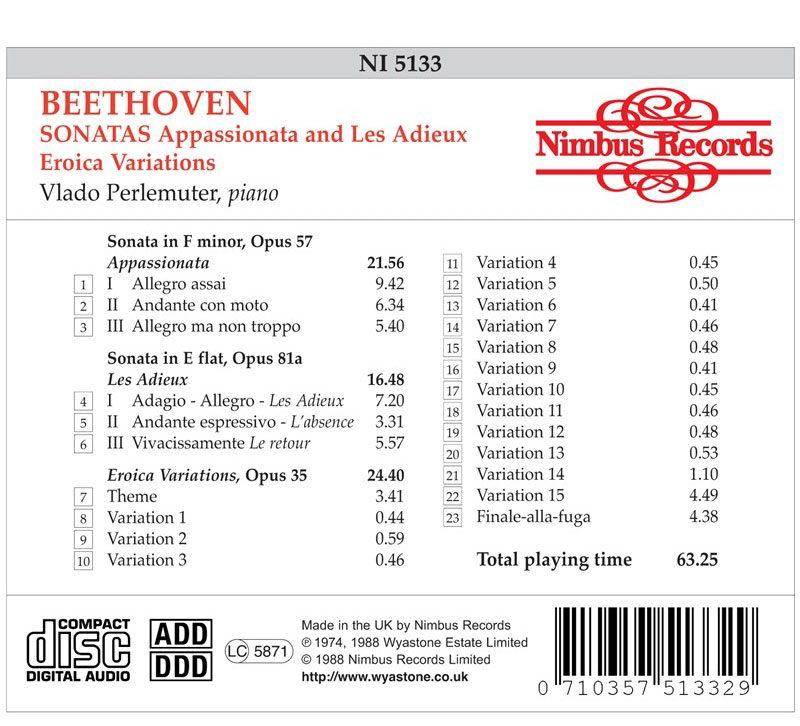Logowanie
Dlaczego wszystkjie inne nie brzmią tak jak te?
Chai Lang, Fan Tao, Broadcasting Chinese Orchestra
Illusive Butterfly
Butterly - motyl - to sekret i tajemnica muzyki chińskiej.
SpeakersCorner - OSTATNIE!!!!
RAVEL, DEBUSSY, Paul Paray, Detroit Symphony Orchestra
Prelude a l'Apres-midi d'un faune / Petite Suite / Valses nobles et sentimentales / Le Tombeau de Couperin
Samozapłon gwarantowany - Himalaje sztuki audiofilskiej
PROKOFIEV, Stanislaw Skrowaczewski, Minneapolis Symphony Orchestra
Romeo and Juliet
Stanisław Skrowaczewski,
✟ 22-02-2017
BARTOK, Antal Dorati, Philharmonia Hungarica
Dance Suite / Two Portraits / Two Excerpts From 'Mikrokosmos'
Samozapłon gwarantowany - Himalaje sztuki audiofilskiej
ENESCU, LISZT, Antal Dorati, The London Symphony Orchestra
Two Roumanian Rhapsodies / Hungarian Rhapsody Nos. 2 & 3
Samozapłon gwarantowany - Himalaje sztuki audiofilskiej
Winylowy niezbędnik
ClearAudio
Cartridge Alignment Gauge - uniwersalny przyrząd do ustawiania geometrii wkładki i ramienia
Jedyny na rynku, tak wszechstronny i właściwy do każdego typu gramofonu!
ClearAudio
Harmo-nicer - nie tylko mata gramofonowa
Najlepsze rozwiązania leżą tuż obok
IDEALNA MATA ANTYPOŚLIZGOWA I ANTYWIBRACYJNA.
Wzorcowe
Carmen Gomes
Celebrating the art and spirit of music - vol. 5 - Reference Songs
- CHCECIE TO WIERZCIE, CHCECIE - NIE WIERZCIE, ALE TO NIE JEST ZŁUDZENIE!!!
Petra Rosa, Eddie C.
Celebrating the art and spirit of music - vol. 3 - Pure
warm sophisticated voice...
SAMPLER - STS DIGITAL, Gregor Hamilton
Celebrating the art and spirit of music - vol. 2 - Love songs from Gregor Hamilton
...jak opanować serca bicie?...
SAMPLER - STS DIGITAL
Celebrating the art and spirit of music - vol. 1 - Leonardo Amuedo
Największy romans sopranu z głębokim basem... wiosennym
Lils Mackintosh
Celebrating the art and spirit of music - vol. 4 - A Tribute to Billie Holiday
Uczennica godna swej Mistrzyni
BEETHOVEN, Vlado Perlemuter
Sonatas Appassionata / Eroica Variations

- Vlado Perlemuter - piano
- BEETHOVEN
>>> Większa okładka A <<< "Vlado Perlemuter was born to a Polish Jewish family, the third of four sons, in Kovno, Russia (this is now Kaunas in Lithuania). At the age of three, he lost the use of his left eye in an accident. His family settled in France in 1907. In 1915, only 10 years old, he was accepted by the Conservatoire in Paris, studying first with Moritz Moszkowski (1915–17) then, later, with Alfred Cortot. At 15, he graduated from the Conservatoire, where he won the First Prize playing Gabriel Fauré’s Thème et variations before the composer (however Fauré was already deaf at that time). In 1925 he met Maurice Ravel, and in 1927 he studied all of Ravel's solo works for piano with the composer himself for a period of six months. Thereafter, he became one of the leading exponents of Ravel's music. In 1929 in two public recitals both attended by the composer, Perlemuter played Ravel's complete piano works, a feat he repeated in 1987 at London’s Wigmore Hall to mark the 50th anniversary of Ravel’s death. He never played contemporary music other than Ravel's, except for Sergei Prokofiev's Piano Concerto No. 3. His fascination for the artistic works of Charles Dickens, William Shakespeare, William Turner and John Constable brought him to England in the early 1930s, and he returned frequently for concerts. He gave his first Wigmore Hall recital in 1938. During World War II, as a Jew he was in danger in Nazi-occupied France, and he was hunted by the Gestapo, barely managing to escape to Switzerland, where he lived till 1949. In 1951 he joined the teaching staff of the Paris Conservatoire, where he remained until 1977. Students from around the world were also attracted by his fame as a pedagogue. In 1958 he was invited to the Dartington Summer School of Music in Devon, and he returned many times. He also taught at the Yehudi Menuhin School. His dictums included that a pianist must pedal not with the foot but with the ear; and must be able to make a crescendo without hurrying, and a diminuendo without slowing down. His art is characterised by shimmering tonal colours and a singing legato combined with an effortless ease of interpretation. Those who heard him live say that his playing was characterised by an enchantingly subtle tone that recordings fail to capture fully. He approached new pieces through the left hand, reading the piece from the bass upwards. He always practised slowly, focusing on each hand separately. His international career spanned over seventy years and he appeared worldwide. He recorded the complete Mozart sonatas, the entire piano works of Ravel, as well as works by Chopin, Beethoven, Mendelssohn, Schumann, Liszt and Fauré. He gave his final concerts at the age of 89, with a valedictory all-Ravel recital at the Victoria hall in Geneva. He died in 2002 at the age of 98." Reviews Perlemuter had carte blanche to record what he wanted from his repertoire for Nimbus. He chose three Beethoven sonatas – the Waldstein is on NI 5350 – and the Eroica variations, the last of which derives from a Birmingham performance. What is revealing about the Appassionata, in particular, is Perlemuter’s explicit revelation of the harmonic implications of the music, notably the left hand steps in the central movement. What may seem didactic in other hands is here a study in carefully balanced drama. One may not think of him as a Beethovenian, but clearly he approached the few works he chose to record in a spirit of precision and concentration. Jonathan Woolf Musicweb-international.com
























